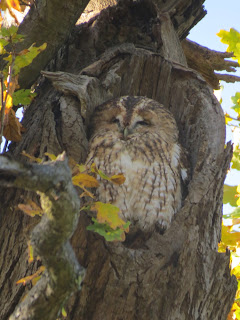Often forgotten, though sandwiched inbetween two honey-pot sites of Aldeburgh and Thorpeness, is Minsmere's little sister, a mix-up of habitats called North Warren. It has a similarly diverse range of habitats, though apart from the wet grassland has nothing in Minsmere's league.
The start point for the reserve was the car park just outside Aldeburgh. From here the walk goes north along the beach, that is literally heaving with people, with the reserve's wet grassland running parallel.
The marshes were fairly dry for this time of the year, due to low rainfall, with wildfowl numbers very low. Usually there are thousands of TEAL and WIGEON, but there was only a scattering of these ducks around, along with small numbers of SHOVELLER and PINTAIL.
Halfway along the beach a footpath leads off and cuts the marshes in two, and as it did so things got a little better. Here the wintering flock of WHITE-FRONTED GEESE was very confiding, often getting close to the path, and mixed in with them were the ubiquitous feral BARNACLE GEESE, literally hundreds of geese being present. In the north marsh despite some flooding there were few other birds about.
Geese feeding in front of the ponies
Past the wet grassland is the old rail line which cuts through the reserve. It's heathy-scrubby area with some small areas of wood. Along here we found female BULLFINCH, always nice to see and never common.The route we took turned into Thorpeness, then it hit the beach and went all the way back down to Aldeburgh, making the route a kind of circle. Amazingly despite the huge numbers of people on the beach constantly disturbing things, there was a flock of 11 SNOW BUNTINGS, who didn't seem to mind, often feeding within a few metres of people. Further along, by the clam sculpture was a STONECHAT, this has been a decent winter for them.
It isn't often North Warren out shines Minsmere, but this holiday it has and all the better for it. Maybe I might just visit this site more often instead of ignoring it for the larger reserves.


















































